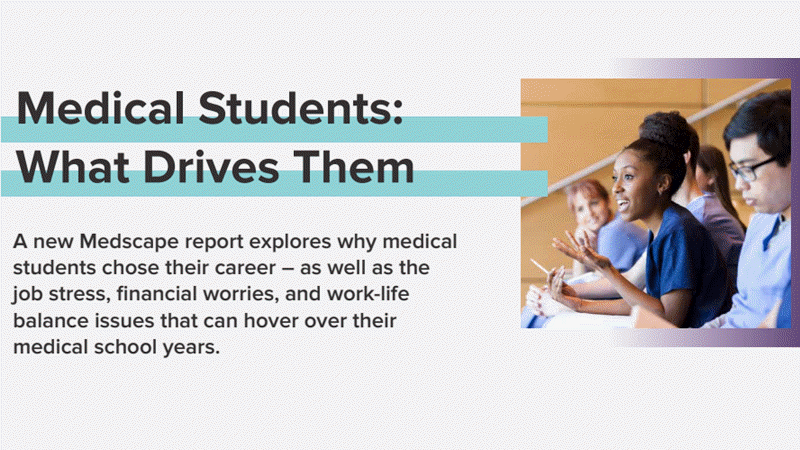Konsep Inti
Understanding the motivations and challenges of medical students in the US.
Abstrak
This content delves into the motivations that drive students to enter medical school and the challenges they face during their education. It highlights the appeal of different specialties chosen by medical students and sheds light on the significant student loan burden they undertake to pursue their dreams. The infographic also mentions the availability of more detailed information on medical student lifestyle in the Medscape Medical Student Lifestyle Report 2023.
Key Highlights:
Exploration of motivations for entering medical school
Specialty appeal and selection process
Student loan burden and financial challenges
Reference to the Medscape Medical Student Lifestyle Report 2023
Infographic: What Drives Students to Enter Medical School?
Statistik
"What motivated medical students to tackle that grind in the first place?"
"How high is the student loan mountain they took on to fulfill that dream?"
Kutipan
"What motivated medical students to tackle that grind in the first place?"
"If you're interested in more details about their lifestyle — work-life balance and stress management, for example — then check out the Medscape Medical Student Lifestyle Report 2023."
Wawasan Utama Disaring Dari
by Jon Mckenna pada www.medscape.com 09-12-2023
https://www.medscape.com/viewarticle/996163
Pertanyaan yang Lebih Dalam
What are the long-term implications of the significant student loan burden on medical students?
The significant student loan burden on medical students can have long-term implications on their financial well-being. The high amount of debt accumulated during medical school can lead to financial stress, impacting their ability to save for the future, make major life decisions such as buying a house or starting a family, and even contribute to burnout. Additionally, the pressure to repay loans may influence career choices, pushing students towards higher-paying specialties rather than following their true passion in medicine. This can result in a shortage of physicians in certain fields that are crucial for public health.
How do the challenges faced by medical students impact their mental health and well-being?
The challenges faced by medical students, such as the demanding workload, high levels of competition, and emotional strain of patient care, can have a significant impact on their mental health and well-being. Many medical students experience symptoms of burnout, anxiety, depression, and even suicidal ideation due to the intense pressure they face. The stigma surrounding mental health issues in the medical field often prevents students from seeking help, leading to further deterioration of their well-being. Addressing these challenges through mental health support programs, stress management techniques, and fostering a culture of openness and support can help mitigate the negative impact on students' mental health.
How can understanding the motivations of medical students help improve the medical education system?
Understanding the motivations of medical students can help improve the medical education system by tailoring support and resources to meet their needs effectively. By recognizing what drives students to enter medical school, educators can design curriculum and training programs that align with their interests and career goals. This can lead to higher levels of engagement, satisfaction, and retention among students. Additionally, understanding students' motivations can help identify areas of improvement in the education system, such as addressing disparities in access to resources, promoting diversity and inclusion, and fostering a supportive learning environment. By incorporating student motivations into the design of the medical education system, institutions can better prepare future physicians and enhance the overall quality of healthcare delivery.
0
